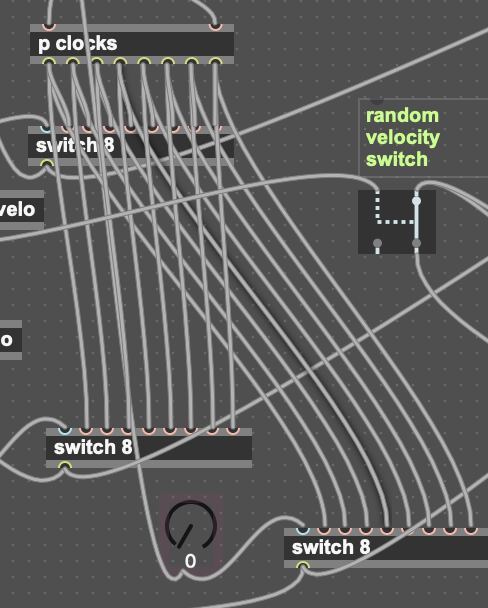Wiring 16 Outs To 16 Ins - An Easier Way Than Wires?
Wiring 16 Outs To 16 Ins - An Easier Way Than Wires?
We need more context. What kind of data? Which objects?
Many times, repeted connexions can be avoided by using the right objects, but it depends a lot on the context and nature of transmitted data.
However, for a more general approach, you can have a look at the Max Toolbox.

Lots of wires.
Hard to help and come with a better approach without knowing what's the purpose of these spaggethi. What is coming from [p clocks]?
Anyway, the Max Toolbox I linked in my previous post might be what you are looking for.
people who look for a solution for only 8 wires are simply too lazy for this elaborative hobby. :)
otherwise, for many connections, there are several partial solutions (beside what patching mechanics offer)
for example you could have a snippet ready which connects 2 dummy objects with 100 wires, so that you can call it and then only rename the objectboxes to what you need.
or you wrap your switch object into an abstraction, which uses prepend/route to bundle up 100 connections into one.
@Roman : I couldn't figure out what your dummy objects/snippet proposal looked like. Would you mind explaining a bit further ?
Alternatively :


the snippets could look like that

create, and after creation you rename the objects.
while i patch, i always have something like this first/second somewhere around, just as i always have a print, a numberbox or a scope with custom settings around to copy and paste from.
for the example on the top - all connected to all - max toolbox is still faster though.
bundled connections would look like this:

both have in common that you have to connect everything by hand - but only once in your life.
That's clear now ! Thanks a lot.
[forward]/ [receive] solution, a bit more "sophisticated" :

I was looking for a solution that would allow adding/removing connections without having to remove/modify many different objects. I share a simple poly~ version that I made for my own usage : it allows changing the number of inlets/outlets on demand :

